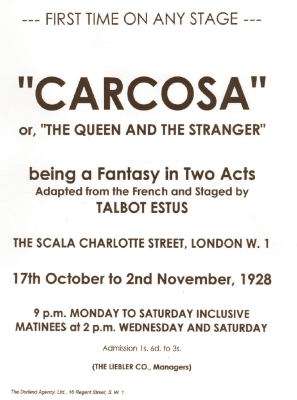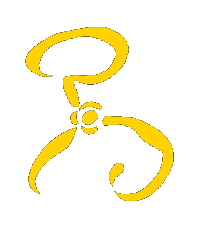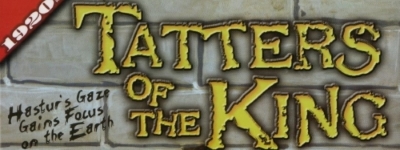Opening Night
The Queen and The Stranger
By
various means a playbill came into the possession of the members of the
party announcing a short run of performances of a new production
starting that very evening October 17th 1928 at the ScalaTheatre on
Charlotte Street.  The
play was entitled Carcosa, or The Queen and the Stranger. As each read
the playbill they felt strangely drawn to attend, though each
rationalised the decision in their own fashion.
The
play was entitled Carcosa, or The Queen and the Stranger. As each read
the playbill they felt strangely drawn to attend, though each
rationalised the decision in their own fashion. Dr Alan Tilston, a research psychologist, was drawn by the reference to "Carcosa" a word he half-remembered from his time treating the ravings of the some worst shell-shocked survivors of the Great War and he arranged to meet Harry Weston, one of his former army chums, and a noted athlete, there.
AC Hughes, the cricketer, was bored and on his own in London far from his beloved Yorkshire, and looking at the playbill, decided he could do worse than take in a little Southern culture.
Stephen Poppadpolus, decided it would help rub his estranged father's nose in it if he were seen out and about in public at such an social event.
Lady Verity meanwhile simply decided to attend as anyone who was anyone was bound to be there!
On arrival, the atmosphere in the Scala was electric as they took their seats. The play itself proved to be memorable even if in the days and weeks to come all of them had gaps in their memory and none of them could quite agree what the play was about or even agree exactly what took place on stage, although all could agree there was a Queen, a Stranger and possibly (there would be some debate about this) the queen's three children involved!
 The
production was well-staged but also somehow - amateurish. The
script was all over the place - but also fascinating. Certain words or
phrases stood out, pulled at them like old memories. The angles of the
scenery somehow seemed off, but always just for a moment - a trick of
the light. At the climax of the first act, the white-masked Stranger
threw back his arms and let his robe part in front, revealing a strange sigil,
painted on his bare, flabby chest (SAN roll for the whole theater). The
audience let out gasps and screams, and then it was intermission.
The
production was well-staged but also somehow - amateurish. The
script was all over the place - but also fascinating. Certain words or
phrases stood out, pulled at them like old memories. The angles of the
scenery somehow seemed off, but always just for a moment - a trick of
the light. At the climax of the first act, the white-masked Stranger
threw back his arms and let his robe part in front, revealing a strange sigil,
painted on his bare, flabby chest (SAN roll for the whole theater). The
audience let out gasps and screams, and then it was intermission.The second act was even more bizzare,but what was most memorable of all however, was that when the play abruptly ended, some people seemed overcome by the emotions evoked. Shouting and loud argument broke out, and in the row in front of Alan a woman broke down in hysteria. As Alan moved to try and help, her gentleman companion took umbrage at his attempts to calm the woman and Henry actually had to restrain the chap physically!
Across the theatre, the woman sitting next to AC was in hysterics and two ushers arived and began manhandling her out of her seat was being manhandled out of her seat . AC took exception to this rough handling of a lady, and brusquely told the ushers to fetch her a glass of water instead and began trying to calm the unfortunate woman.
Meanwhile it appeared a veritable riot had broken out! Lady Verity had to intercede when the young man sitting next to her seemed intent on choking the life out of his fiancée. A few rows away, while still attempting to calm the distraught woman with the glass of water one of the ushers had finally brought him, AC was suddenly subject to an unprovoked attack by a rude fellow wielding a broken bottle.
Stephen, deciding that discretion was the better part, made his way cautiously to the Fire Exit – just as some of the local constabulary barged-in, whistles-a-blowing.
Some semblance of order was eventually restored, but unfortunately Henry and Lady Verity found themselves rounded up with the guilty parties to be taken off to Bow Street. Alan, still dealing with several case of hysteria, noticed and resolved to follow and bail Henry out.
In the foyer of the Scala, somewhat bizarrely, they appeared to be going ahead with the planned post-show party and AC and Stephen found themselves standing next to each other, somewhat uncomfortably clutching glasses of champagne and munching on canapés while they listened to the, albeit somewhat subdued, chatter of the other guests ,ad the shouts coming form the main auditorium where the police were still trying to calm the situation. Mingling with somewhat apprehensively, AC oveheard one of the actresses, Jean Hewart, saying she believed the play to be cursed, and that she had suffered nightmares since rehearsals and that “Hannah had as well..."
As the remaining unfortunates were escorted out, the author of the play, Talbot Estes, appeared and waxed lyrical about his play and its source material The King in Yellow. He deplored what had happened after the performance but then went on to say, rather smugly, it was not a complete surprise to him as “any work of art should seek to inspire fervour”.
